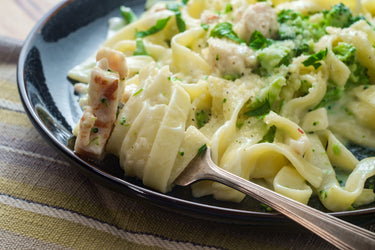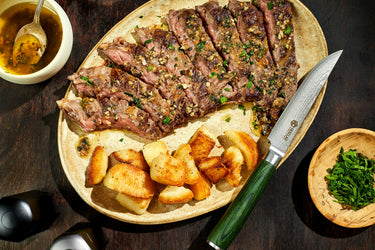Want to make the best pancakes? Follow these 9 tips.

Though pancake lovers the world over will quibble about which is the superior recipe—tangy buttermilk stacks; nubby cornmeal coins, or earthy buckwheat rounds, to name a few—there are commonalities between the approaches to mixing, cooking, flipping, and serving. Whether you prefer your pancakes small and many or large and few, these tips will help you make the best pancakes.
- Invest in a double-burner griddle: The reality for so many pancake makers is that they stand over the stove pouring batter, flipping, and serving pancakes the whole morning before sitting down to their own stack. A double-burner griddle maximizes your stovetop space, allowing you to make more pancakes at once. Plus, a double-burner griddle spreads the heat evenly across burners, unlike a skillet, which won’t distribute heat as evenly. If you don’t have a double-burner griddle, a single-burner griddle or a large, nonstick skillet will do.
- A wide, flat spatula will make flipping a cinch: You’ll want a thin, flat spatula that can get under the surface of the pancake and flip it in one go. Something that’s too flexible will cause the pancakes to fall off before you can flip, so choose something sturdy like a fish spatula.
- Avoid tough pancakes by mixing lightly: Though you’ll want to use a whisk to thoroughly incorporate the dry ingredients, once you add in the dry ingredients, it’s best to quickly stir the ingredients together with a spatula or a fork. You’re looking for everything to be mixed together with no large lumps of dry ingredients. Overmixing will cause the pancakes to be tough and dense.
- The oven is the key to serving pancakes for a crowd: To avoid a short order cook situation for one person, heat the oven to 120ºC, and place a rimmed baking sheet with a wire rack set on top inside. As you finish the batches of pancakes, transfer them to the wire rack. When you’re ready to serve, transfer the pancakes to a serving platter. (Or, if you’d rather the ease of serving from the baking sheet, make sure to warn eaters that the pan will be extremely hot.)
- Get the heat of the griddle or pan just right: Too hot and the pancakes will burn before the leavening in the batter has time to do its job. Too low and the pancakes will be pale and limp. Give the griddle or skillet enough time over medium-low, then add butter or oil. Once heated, test the heat with a small amount of batter. If the fat begins to smoke, turn the heat down. If it doesn’t sizzle at all, then increase the heat slightly. Keep an eye on the heat as you cook the batches, adjusting up or down as necessary.
- If you’re going to use add-ins, get them ready before you begin to cook: Chocolate chips, blueberries, and banana slices are all classic, but follow your bliss when it comes to pancake add-ins. The only important thing is to have them ready to go before you start cooking. Fold in small bits (like finely chopped nuts or rolled oats) to the batter, but wait for bigger toppings until you’ve started cooking. Add things like blueberries and banana slices about 30 seconds after pouring the batter into the pan.
- Wait for most of the bubbles pop before flipping: When the chemical leavening (whether baking powder or baking soda combined with an acid like buttermilk) begins to react, it causes carbon dioxide gas to form, which then escapes through the surface. Waiting until the bubbles pop means the pancakes will be fluffier.
- Avoid cold toppings: Not to get all hyperbolic, but nothing is worse than cold butter and maple syrup cooling your stack. Instead, take the butter out of the fridge before you start cooking, and heat the maple syrup in a small pitcher before serving.
- Freeze any leftover pancakes for future you: In the unlikely event that you have leftover pancakes, freeze them in an airtight ziptop bag. Toast or microwave to eat for impromptu pancake feasts.
Perhaps a worthy bonus tip: experiment with different types of pancakes. You may have a house favorite, but there’s a world of pancakes out there to be explored. Lemon ricotta offers some of the tang with a more substantial texture, while oatmeal pancakes offer a touch of health to the plate. No one will be mad if you decide to cook your way through all the pancake styles in the world.





